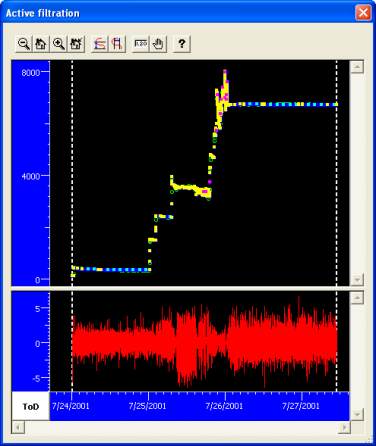Basic HTML Version


Ecrin v4.12 - Doc v4.12.02 - © KAPPA 1988-2009
Ecrin Guided Session #1
• Ecr
GS01 - 10/37
Click on
, the next step consists in pre-loading a portion of the data for filtering
parameters determination. The number of data points to preload can be chosen (see Figure
C01.12). Leave the default value 100,000.
Press
at the bottom of the dialog to continue.
This real set of data starts with a gap of more than the imposed condition (1 hour here)
between the first point and the remaining one which makes the first pre-load to fail.
It will automatically switch to the next available portion of data satisfying the preload
conditions. Accept the warning and press OK to go to the following data interval.
The data is displayed and will undergo three steps: Re-sample / Wavelet / Post-filtration. The
wavelet algorithm requires that the data be re-sampled evenly, and the sampling interval
typically depends on the application type. For welltests, the minimum delta time may be used
(1sec or smaller). For production data, a large time step is usually sufficient (5min). An
Intermediate value (15 sec) by default should provide a good compromise for both applications
in most cases.
On the pre-loaded set, the wavelet algorithm is tuned (filter level wheel, can be moved to both
negative and positive levels, zero is the default filtering level), and finally the post-filtration is
set using default values. In this example we leave the filter level at zero. Click on the 'TEST'
button and it can be seen in the below figures, that out of the 19814 points in the window,
around 1763 points are selected in the end after the three steps process.
Note:
the 'Keep local extrema' option should
not
be checked.
On the right (Figure C01.14 Load Data – Active Filtration), bottom view, the difference
between the original and filtered sets is displayed.
Fig. C01.13
• Load Data – Filters
Fig. C01.14
• Load Data – Active Filtration

